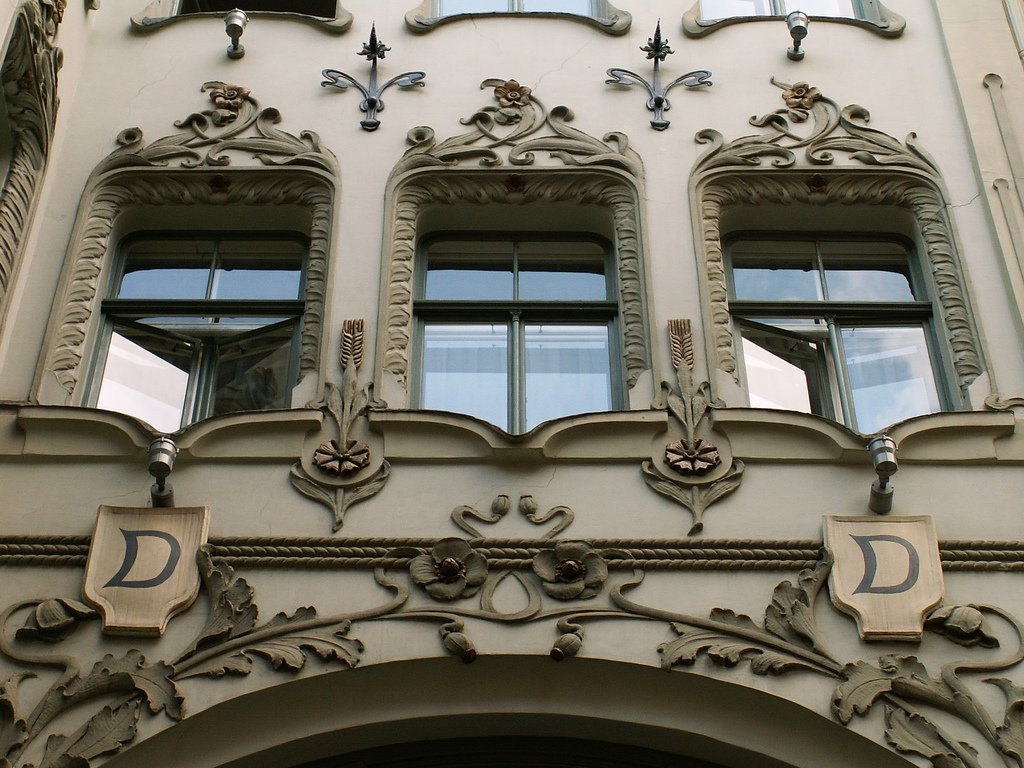#5902. Elegant Art Nouveau Façade with Decorative Elements and Monograms

The image showcases a striking example of an Art Nouveau (Jugendstil) façade, characteristic of early 20th century European architecture. The building's exterior is adorned with exquisite decorative elements that demonstrate the plasticity and flowing forms so typical of this artistic movement.
Particularly noteworthy are the three large windows with ornate framing, crowned by curved stucco elements featuring plant motifs. Above each window sits a distinctive "crown" of stylized ornaments. Below the windows, decorative elements bearing the letter "D" can be observed, likely indicating the name of the building's owner or architect.
The façade is distinguished by an asymmetrical yet harmonious arrangement of decorative elements. Plant motifs, stylized flowers, and curved lines create an organic composition. Between the windows, metallic decorative elements resembling stylized leaves or fleur-de-lis add elegance and lightness to the façade.
The color scheme of the façade is restrained, in beige tones, which allows for full appreciation of the artistic richness of the relief and the texture of the decorative elements. This is an excellent example of how Art Nouveau architecture sought to synthesize functionality and aesthetics, transforming an ordinary façade into a work of art.